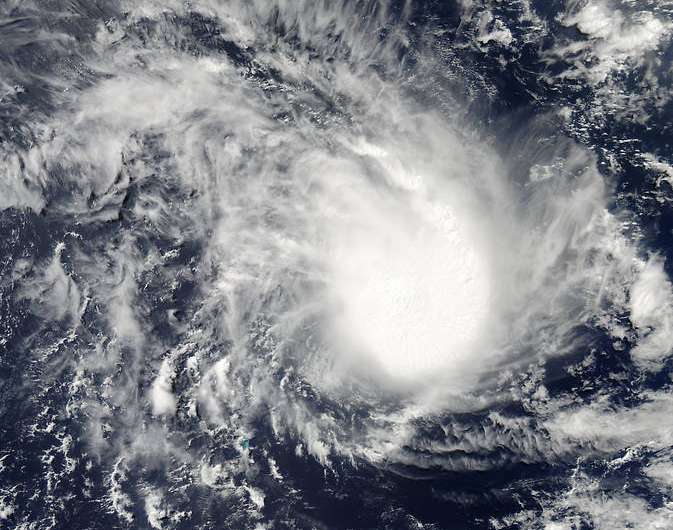NASA sees Tropical Cyclone 22S 'come together right now'

Like the classic song from 1969, NASA's Aqua satellite passed over Tropical Cyclone 22S in the Southern Indian Ocean and saw it "come together, right now."
The Moderate Resolution Imaging Spectroradiometer or MODIS instrument that flies aboard NASA's Aqua satellite captured a visible image of Tropical Storm 22S as it organized and became a tropical storm on April 6 at 09:45 UTC (5:45 a.m. EDT). The image was created by the NASA Goddard MODIS Rapid Response Team, at NASA's Goddard Space Flight Center in Greenbelt, Maryland. The image showed a rounded area of clouds associated with the tropical storm and a band of thunderstorms from the north feeding into the eastern side of the center of circulation.
On April 6, 2015, at 1500 UTC (11 a.m. EDT), Tropical Cyclone 22S' maximum sustained winds were near 45 knots (51.7 mph/83.3 kph). It was centered near 14.9 south latitude and 61.4 east longitude, about 401 nautical miles (461 miles/ 743 km) northeast of Port Louis, Mauritius. 22S has tracked west-southwestward at 9 knots (10.3 mph/16.6 kph).
22S is moving along the northern edge of a subtropical ridge (elongated area) of high pressure and once that ridge weakens and moves east, the tropical storm will turn to the south and intensify to hurricane-force upon approach to Rodrigues Island. Rodrigues Island is an outer island in the Republic of Mauritius, located about 350 miles (560 km) east of Mauritius.
Provided by NASA's Goddard Space Flight Center





















